Salvete Amici,
the (small) Primus of our Ludus, the Pumillus Praezeps – irascible dwarf, became XL. This is a good occasion to rummage a little in our picture collections and we came across three beautiful illustrations.
First, we came across a figure of a boxing dwarf (fig. 1), dated between the 1st century BC and the 1st century AD. Our search almost ended here, but our data octopus first found another dwarf in a pankration context (fig. 2) and finally, in an antiquities blog[1], a divine cock with a conspicuously small keeper (fig. 3). On closer inspection, one might imply a provocative nature. We knew then that we had found the template for our current occasion.
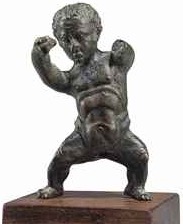
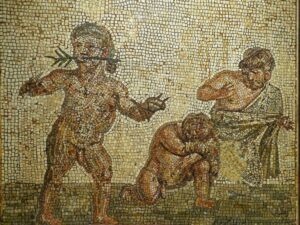
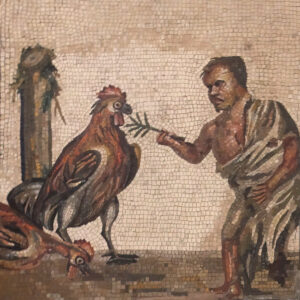
So an appropriate interpretation was made by our art smith. It is important to know that the Lanista and Pumillus have been training and fighting together for 14 years. A certain competition has developed and this competition should be captured. This interpretation is reflected in the final choice of motif. This motif is, of course, to adorn Pumillus‘ new pectoral. It should be mentioned here that the old giant pectorals of Pumillus and Pullus from the Krondac forge (based on the aphrodisias relief) were to be, and now are, replaced by even better „historical interpretations“.
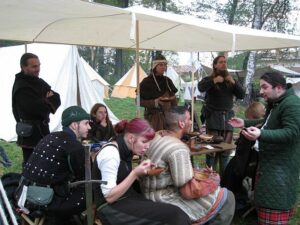
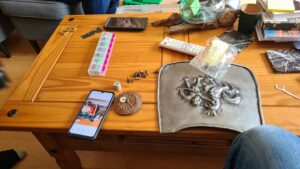
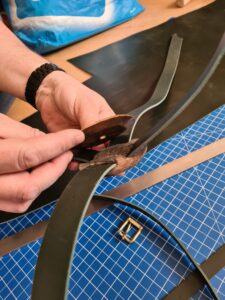
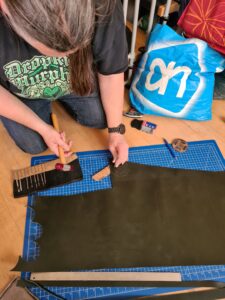
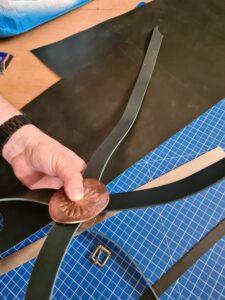
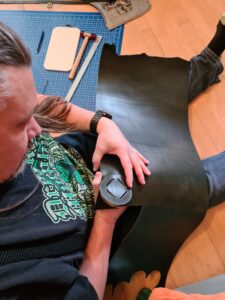
The pectoral is similar to Pullus’s model and based on the same ludus knowledge. But again we experimented a little. This time the holding construction was the object of investigation. We know from the Tiber relief that the straps could be crossed on the back. We adapted this again and this time stabilised the crossing point with a leather guide with metal fittings. We chose the leather guide because we know of no finds of such strap guides. This can be explained by a rotting material.
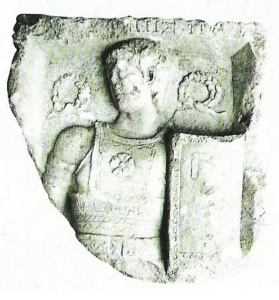
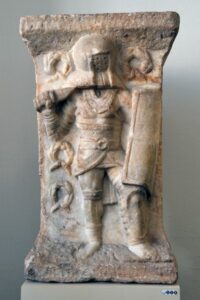
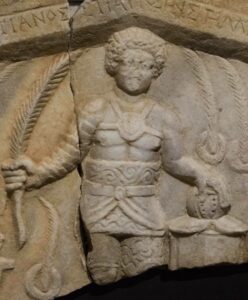
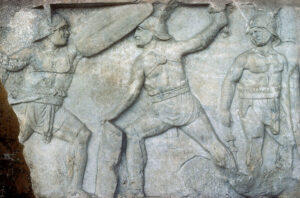
In addition, we have deviated from the four 45° angles based on a grave stone from ephesos 1(fig 11) the belt mountings in favour of 2x 90° and 2x 0° angles like shown in the fig 12 from ephesos too. Here we come closer to the appearance of the relief in the Thermal Museum in Rome (cf. Fig.13). This small change makes the pectoral lie flatter against the wearer’s chest (and less on the abdomen) and the straps lie smoother against the body in our case.
It has to be mentioned that the leather work was again guided and carried out by our man for the leather „Mons“. The leather colour was chosen after the arena colour of Pumillus in green.
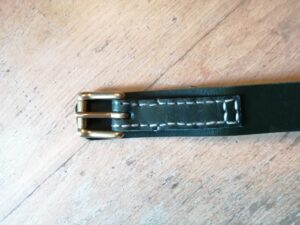
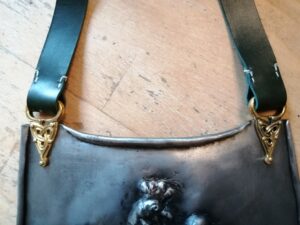
We pre-drilled the pectorals and by means of small riveted bronze ornaments the leather was fixed in the upper part. Here we chose brass roller buckles to minimise wear on the leather and for sweat resistance. In the lower part, the leather was riveted directly to the pectoral.
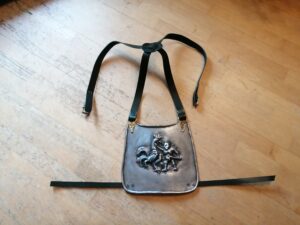
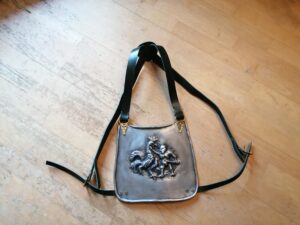
The result is this beautiful pectoral that sums up a long history.
Valete your Lanista Pullus and Master Mons
[1] https://ancientimes.blogspot.com/2020/11/alectryomancy-and-sacred-rooster.html